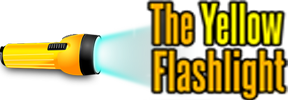Creating effective call-to-action designs is a cornerstone of successful marketing strategies. By leveraging eye-catching visuals and clear messaging, designers can significantly enhance user interaction and achieve higher conversion rates. This guide explores the principles and practices that transform your CTAs into powerful tools for engagement.
Understanding the Power of Visuals in CTA Design
Hey there! Let’s dive into the world of designing effective Call-to-Actions (CTAs), where graphic design magic truly happens. Imagine creating art that not only pleases the eye but also nudges people to take action. That’s what visuals in CTA design are all about.
Visuals aren’t just about throwing flashy colors on a button. They’re about creating a visual identity that connects with the audience. Think of it like guiding your friend’s eyes to the candy jar—you make it vibrant and irresistible.
- Use dynamic colors that pop against the background. Contrast grabs attention like nothing else.
- Shapes are your allies. Try contrasting shapes to make the CTA prominent.
- Place your CTA where it naturally fits in the user’s path. Easy to find, hard to ignore.
When combining these elements, remember, the goal is clarity, not clutter. It’s like composing a symphony of colors and shapes to resonate with the user’s emotions. This harmony boosts engagement and subtly encourages action.
As a beginner, you’ll find that refining your creative process enhances your skills. Just like crafting logos that represent brands, CTA design requires understanding the branding strategy. Check out our section on crafting the message for clarity and urgency—essential to learn how concise messaging complements visuals to drive conversions.
Crafting the Message: Clarity and Urgency

Imagine you’re whispering a secret to a friend. You keep it simple, clear, and urgent, right? This is exactly what your call to action (CTA) needs—a clear, concise message that sparks immediate action. By focusing on clarity and urgency, your CTA becomes the beacon that guides visitors down the conversion path.
Start by using action-oriented language. Words like ‘Start,’ ‘Buy,’ and ‘Join’ give an instant cue of what you want the user to do. This simplicity eliminates confusion and prompts immediate reaction, avoiding the information overload that often stalls decisions.
Now, let’s talk urgency. The fear of missing out is potent. By adding an element of scarcity or time-sensitivity—’Limited Time Offer’ or ‘Only 2 Left!’—you tap into the user’s instinct to act now rather than later. This method is not just a psychological trick; it’s an enhancer of clarity, focused on swift commitment.
Align your CTA with the visual identity of your brand for harmony. Make it stand out yet resonate with the overall design theme. Think of graphic design as your ally here, where thoughtful color combinations and typography lead the user’s eye directly to the CTA.
- Employ high contrast colors to spotlight your CTA.
- Use AI agents to personalize CTAs based on user behavior.
- Ensure accessibility, meaning it’s easily visible and clickable across all devices.
Remember, crafting a CTA is not just about the words. It’s about the embedded emotion that ‘seals the deal’—an emotional blend of anticipation and action, all directed by the unassuming power of clarity and urgency.
Integrating Psychology for Enhanced CTA Impact
Imagine chatting with a friend who’s excited about diving into graphic design. You’re eager to share a secret weapon: understanding user psychology. This tool is crucial in crafting killer CTAs (Call-to-Actions) that truly resonate.
Consider this – humans are influenced by simple incentives like FOMO (Fear of Missing Out) and social proof. Think of the rush you feel when you see “Only 3 seats left!” or a CTA backed by glowing reviews. These touch emotional triggers you can harness for higher conversion rates.
Next, tailor your message to your audience. Personalization amplifies your CTA’s impact. Using persuasive techniques rooted in psychology, like the perceptual set theory, helps you understand how minds anticipate actions on a webpage. Therefore, aligning the CTA within this logical flow boosts effectiveness.
Be innovative with colors and text – these aren’t just tools, they’re superpowers. Bold colors and clear messages draw attention effortlessly. You can read more about the role of color psychology in design strategies.
When making design choices, remember how the Gestalt principles help in creating visuals that guide users intuitively. It’s not about clutter but clarity. By applying these principles, your CTAs become persuasive magnets.
Use these psychological pointers at The Yellow Flashlight blog to make your CTAs irresistible. They’re the invisible thread weaving through every successful branding strategy and digital artwork. Let’s transform thought into action with every click!
Final words
By mastering the art of call-to-action design, businesses can significantly enhance their conversion rates. Eye-catching, clearly communicated CTAs encourage user interaction and lead to desired outcomes. This pivotal aspect of design not only bridges between enticing content and desired action but also positively impacts overall marketing success. Dive into this powerful design element and elevate your strategy today.
